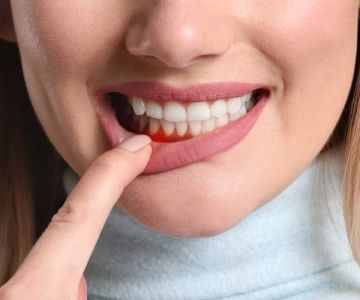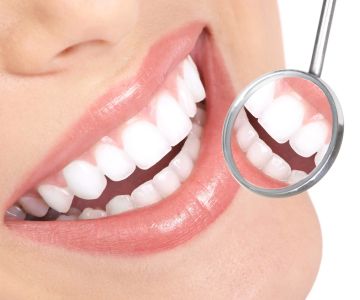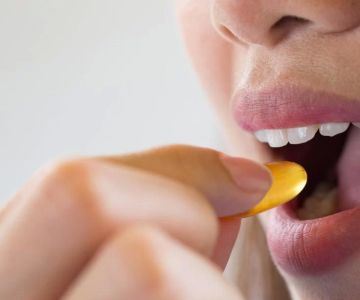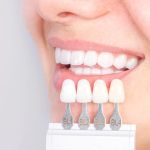What Does It Mean If the Gums Change Color (e.g., Turning Purple or Red)?
Gum health is an essential aspect of our overall oral hygiene, yet it often doesn't receive the attention it warrants. The color of your gums can actually be an important indicator of their health. Pink gums generally signify good health, but what happens when you notice a change to purple or red? Understanding the significance of this color change could be vital in diagnosing potential oral health issues or even systemic health problems. In the United States, where gum disease affects a substantial portion of the population, raising awareness about these signs is increasingly important. This article will delve into what it means when your gums change color, the potential underlying causes, and what actions you can take.
Understanding Normal vs. Abnormal Gum Color
Healthy gums typically have a pink coloration, but this can slightly vary based on individual factors like ethnicity. It’s crucial to understand that a sudden change in gum color, particularly turning purple or red, is not normal and often warrants further examination. Purple or red gums can be a symptom of inflammation or other serious conditions. According to the American Dental Association, gum color changes can often be an early indicator of periodontal disease. Noticing these changes early can be key to preventing more serious dental issues down the line.
Possible Causes of Gum Color Change
The most common cause of red or purple gums is gingivitis, a mild form of gum disease caused by plaque buildup. This condition often leads to inflammation, bleeding, and tenderness. However, gum color changes can also be attributed to more serious conditions such as periodontitis, which is a severe gum infection that can result in tooth loss if untreated. Beyond plaque-related issues, systemic factors such as nutritional deficiencies, hormonal changes, or even medication side effects can contribute to changes in gum color.
The Role of Lifestyle in Gum Discoloration
Lifestyle choices, including smoking and diet, play a significant role in gum health. Smoking not only contributes to stained teeth but is also a leading cause of gum disease. Studies show that smokers are up to six times more likely to develop gum disease compared to non-smokers. Diets high in sugar and low in nutrients such as vitamin C can also lead to gum issues. For Americans, making lifestyle changes could significantly impact the prevalence of gum discoloration and related diseases.
Actionable Steps to Address Gum Discoloration
When you notice a change in your gum color, it is imperative to act swiftly. The first step is always to consult with a dental professional. They can diagnose the issue and recommend appropriate treatment or lifestyle changes. Regular dental check-ups, proper oral hygiene, including brushing and flossing, and perhaps even a dietary change could be required. Dentists often emphasize the importance of professional cleanings to remove plaque buildup, which is crucial in maintaining healthy gums.
When to Seek Professional Help
While mild changes might not always be an immediate cause for alarm, persistent changes in gum color should always be evaluated by a professional. Indicators for urgent consultation include persistent bleeding, severe pain, or if the color changes are accompanied by other symptoms like bad breath or loose teeth. Understanding these signs can help Americans make informed decisions about their gum health, potentially preventing more severe conditions.
In conclusion, observing a change in your gums' color, such as turning purple or red, is not something to ignore. While it might be tempting to disregard these changes, they often signal underlying health issues that require prompt attention. Practicing good oral hygiene, seeking professional dental care, and making informed lifestyle choices are proactive measures everyone in the United States should adopt. As the insights from this article emphasize, taking care of your gums is as crucial as taking care of your teeth, if not more so.
If you’re seeking more advice on maintaining healthy gums, you can explore additional resources at Dentistry Toothtruth.







 University of the Pacific, Arthur A. Dugoni School of Dentistry
University of the Pacific, Arthur A. Dugoni School of Dentistry Central Pennsylvania Endodontics, LLC
Central Pennsylvania Endodontics, LLC Sage Dental of Windermere
Sage Dental of Windermere Dr. Maria Regina M. Tan, DDS
Dr. Maria Regina M. Tan, DDS Icon Dental
Icon Dental Dental Solutions of Voorhees
Dental Solutions of Voorhees The Importance of Oral Health Education During Pregnancy for a Healthy Pregnancy
The Importance of Oral Health Education During Pregnancy for a Healthy Pregnancy Why Skipping Dental Checkups Can Lead to Bigger Oral Health Problems
Why Skipping Dental Checkups Can Lead to Bigger Oral Health Problems Advantages of Porcelain Dental Restorations
Advantages of Porcelain Dental Restorations Best Tips for Brushing Your Teeth Properly for Healthy Gums: Essential Techniques for Oral Health
Best Tips for Brushing Your Teeth Properly for Healthy Gums: Essential Techniques for Oral Health How Can Diabetes Cause Tooth and Gum Problems? Preventing and Managing Oral Health Issues
How Can Diabetes Cause Tooth and Gum Problems? Preventing and Managing Oral Health Issues Healthy Habits for Promoting Good Oral Health and Hygiene: Tips for a Healthy Smile
Healthy Habits for Promoting Good Oral Health and Hygiene: Tips for a Healthy Smile